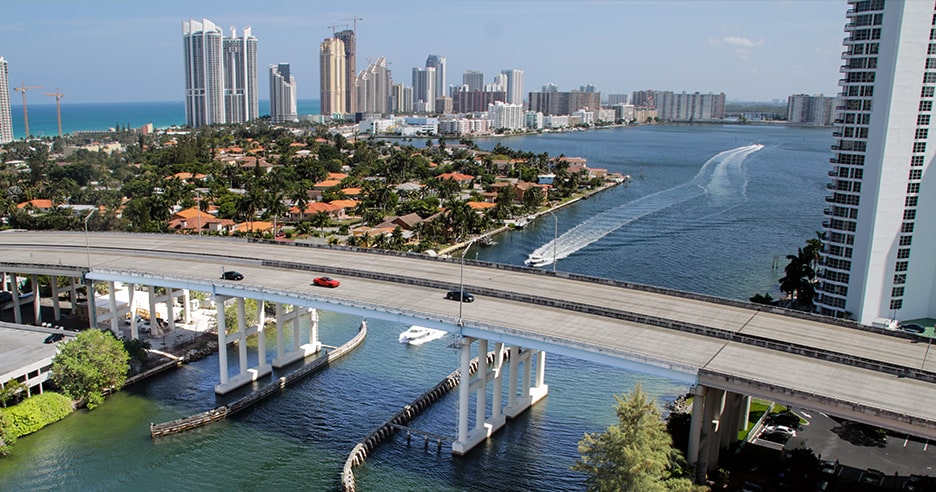Is your city’s housing market wildly overpriced or hiding a surprising deal? Let’s find out.
Florida International University’s director of the Hollo School of Real Estate and Hollo Research Fellow, Eli Beracha, recently partnered with Ken H. Johnson to produce new research analyzing the Top 100 U.S. Housing Market Rankings. This monthly analysis evaluates affordability and pricing trends across the nation's largest housing markets, offering a clear look at which markets may be over or undervalued based on historical data.
The analysis compares actual average home prices in a metro to statistically modeled prices for that metro using a history of Zillow data. These models estimate where home prices should be today, based on each market’s historical pricing trajectory and local conditions.
Markets where current home prices exceed the modeled expectations are considered to be selling at a premium, indicating they may be overpriced relative to long-term norms. Meanwhile, markets pricing below their modeled value are categorized as selling at a discount, suggesting potential undervaluation or untapped demand.
The resulting report ranks the 100 largest U.S. housing markets from most overpriced to most underpriced.
Top 100 U.S. Housing Market Rankings: January 2025
|
Rank |
MSA |
Premium |
|
1 |
Detroit, MI |
37.0% |
|
2 |
Las Vegas, NV |
35.0% |
|
3 |
Atlanta, GA |
33.1% |
|
4 |
Cleveland, OH |
32.8% |
|
5 |
Knoxville, TN |
32.0% |
|
6 |
Worcester, MA |
32.0% |
|
7 |
New Haven, CT |
30.5% |
|
8 |
Rochester, NY |
29.3% |
|
9 |
Charlotte, NC |
29.0% |
|
10 |
Akron, OH |
28.9% |
|
11 |
Winston, NC |
28.9% |
|
12 |
Columbus, OH |
28.0% |
|
13 |
Modesto, CA |
27.8% |
|
14 |
Greensboro, NC |
27.8% |
|
15 |
Grand Rapids, MI |
27.5% |
|
16 |
Cincinnati, OH |
27.4% |
|
17 |
Toledo, OH |
27.3% |
|
18 |
Hartford, CT |
27.2% |
|
19 |
Orlando, FL |
27.2% |
|
20 |
Miami, FL |
27.0% |
|
21 |
Memphis, TN |
26.9% |
|
22 |
Tampa, FL |
26.6% |
|
23 |
Palm Bay, FL |
26.5% |
|
24 |
Syracuse, NY |
26.0% |
|
25 |
Durham, NC |
26.0% |
|
26 |
Chattanooga, TN |
25.9% |
|
27 |
Lakeland, FL |
25.5% |
|
28 |
Albuquerque, NM |
25.5% |
|
29 |
Providence, RI |
25.4% |
|
30 |
Cape Coral, FL |
24.9% |
|
31 |
Columbia, SC |
24.7% |
|
32 |
Deltona, FL |
24.2% |
|
33 |
Bridgeport, CT |
23.8% |
|
34 |
Phoenix, AZ |
23.6% |
|
35 |
Milwaukee, WI |
23.3% |
|
36 |
Wichita, KS |
23.2% |
|
37 |
Greenville, SC |
23.1% |
|
38 |
Stockton, CA |
22.7% |
|
39 |
Kansas City, MO |
22.4% |
|
40 |
Chicago, IL |
22.2% |
|
41 |
Tulsa, OK |
22.1% |
|
42 |
Jacksonville, FL |
22.0% |
|
43 |
Boise City, ID |
22.0% |
|
44 |
Ogden, UT |
21.9% |
|
45 |
Tucson, AZ |
21.9% |
|
46 |
Charleston, SC |
21.8% |
|
47 |
Omaha, NE |
21.8% |
|
48 |
Raleigh, NC |
21.4% |
|
49 |
Bakersfield, CA |
21.2% |
|
50 |
Allentown, PA |
21.2% |
|
51 |
St. Louis, MO |
20.7% |
|
52 |
Riverside, CA |
20.7% |
|
53 |
North Port, FL |
20.7% |
|
54 |
El Paso, TX |
20.6% |
|
55 |
San Diego, CA |
20.2% |
|
56 |
Augusta, GA |
19.9% |
|
57 |
Indianapolis, IN |
19.7% |
|
58 |
Scranton, PA |
19.5% |
|
59 |
Louisville, KY |
19.4% |
|
60 |
Buffalo, NY |
19.4% |
|
61 |
Springfield, MA |
19.3% |
|
62 |
Madison, WI |
18.8% |
|
63 |
Fresno, CA |
18.7% |
|
64 |
Boston, MA |
18.4% |
|
65 |
Spokane, WA |
18.0% |
|
66 |
Nashville, TN |
18.0% |
|
67 |
Seattle, WA |
17.7% |
|
68 |
Richmond, VA |
17.5% |
|
69 |
Salt Lake City, UT |
17.0% |
|
70 |
Provo, UT |
17.0% |
|
71 |
Harrisburg, PA |
16.4% |
|
72 |
San Jose, CA |
16.1% |
|
73 |
Birmingham, AL |
15.9% |
|
74 |
Dallas, TX |
15.5% |
|
75 |
Philadelphia, PA |
15.3% |
|
76 |
Oklahoma City, OK |
14.6% |
|
77 |
Colorado Springs, CO |
14.3% |
|
78 |
Des Moines, IA |
14.0% |
|
79 |
Oxnard, CA |
14.0% |
|
80 |
Sacramento, CA |
13.7% |
|
81 |
Los Angeles, CA |
13.6% |
|
82 |
McAllen, TX |
13.4% |
|
83 |
Jackson, MS |
13.1% |
|
84 |
Minneapolis, MN |
13.0% |
|
85 |
Denver, CO |
12.2% |
|
86 |
Albany, NY |
12.2% |
|
87 |
New York, NY |
11.7% |
|
88 |
Houston, TX |
11.4% |
|
89 |
Little Rock, AR |
11.1% |
|
90 |
Virginia Beach, VA |
9.4% |
|
91 |
Pittsburgh, PA |
7.9% |
|
92 |
Baton Rouge, LA |
6.4% |
|
93 |
San Antonio, TX |
5.9% |
|
94 |
Washington, DC |
5.9% |
|
95 |
Austin, TX |
5.8% |
|
96 |
Baltimore, MD |
5.7% |
|
97 |
Portland, OR |
5.6% |
|
98 |
San Francisco, CA |
0.2% |
|
99 |
Urban Honolulu, HI |
-6.0% |
|
100 |
New Orleans, LA |
-8.2% |
According to Ken Johnson, Detroit, MI currently ranks as the most overpriced housing market in the U.S., with homes selling at a 37% premium over the area’s long-term pricing trend. Despite its tepid population growth, Detroit has hovered near the top of the rankings for some time, making it, in Johnson’s view, one of the most puzzling metros in the country. In contrast, he notes that Las Vegas, NV and Atlanta, GA, which follow closely behind at 35% and 33.1% premiums, are easier to understand given their rapid population growth. Johnson also highlights an interesting trend in Florida, where all nine measured metros are seeing a drop in their premium scores. Orlando, the highest ranked in the state, now sits at 27.1%, placing nineteenth nationally. He suggests this decline may indicate Florida is nearing the peak of its current housing cycle. Eli Beracha adds that New Orleans, LA may currently offer the best value in the country, with homes trading at an 8.2% discount, a figure likely tied to the area’s slow population growth. In the end, both researchers agreed that for housing affordability to improve, wage increases must begin to outpace the rise in home prices. In this environment housing can become affordable again.
Eli Beracha is a professor in the Master of Science in International Real Estate program, which is ranked No. 1 globally for its cutting-edge real estate research by the Journal of Real Estate Literature. To deepen your knowledge of real estate investments and all aspects of the field, visit the Master of Science in International real estate program page.


